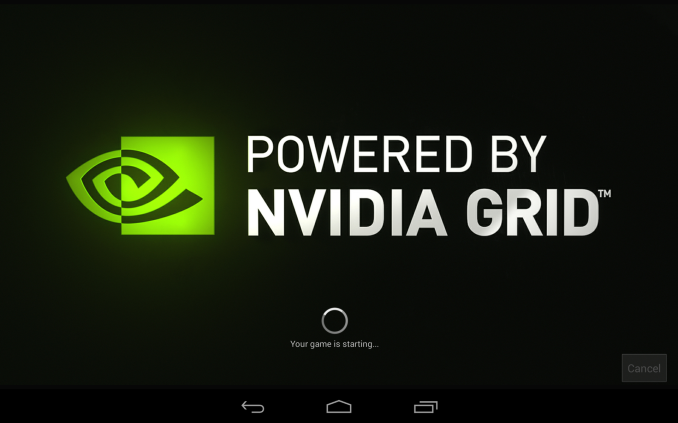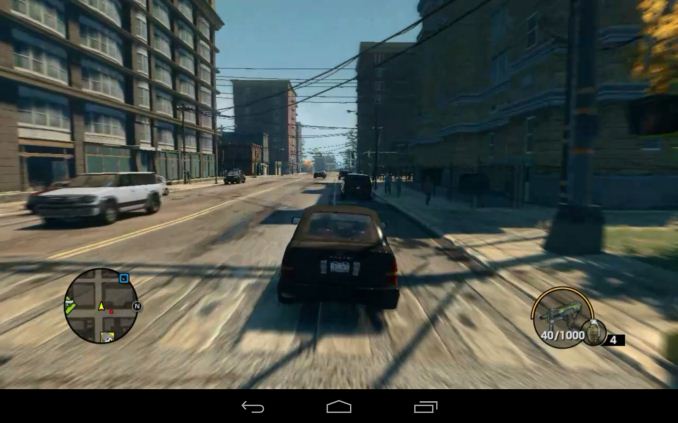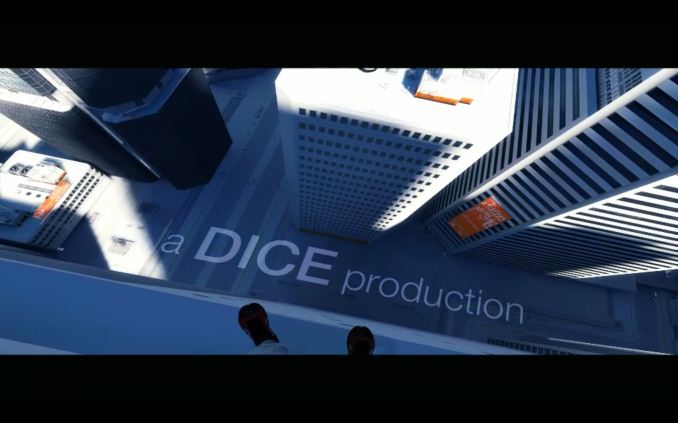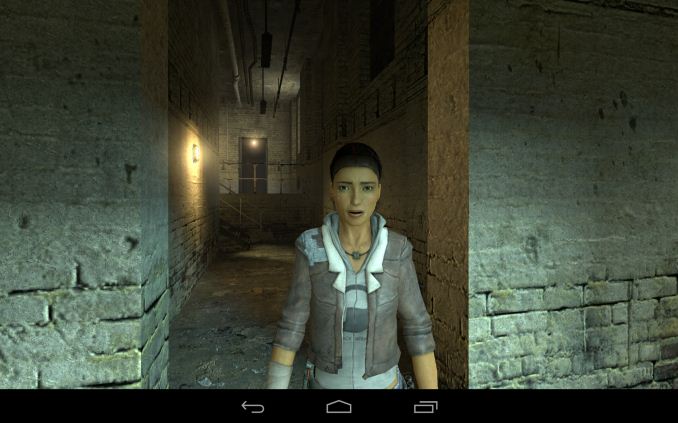The NVIDIA SHIELD Tablet Review
by Joshua Ho on July 29, 2014 9:00 AM ESTGameStream and GRID
The final software features that Shield Tablet brings to the table are GameStream and GRID. These are effectively methods of turning the tablet into a thin client, as all of the rendering/computation is done on a computer either in the LAN or on a server in San Jose. From a technical perspective, both work great as long as the connection has high bandwidth and low latency. For GRID, I managed to get a great user experience on a symmetrical 10 Mbps connection and around 10ms latency to the server. Games like Saints Row 3 played as if running on a console when the device is actually streaming from NVIDIA servers. From the user’s perspective, it’s a matter of going into the app drawer, opening GRID, and selecting a game. It’s simple and given sufficient server coverage I could easily see a Netflix-style usage model taking off quite successfully.
Although I didn’t spend as much time with GameStream, I didn’t detect any input lag and for the most part it’s just as simple. As long as a GameStream-enabled PC is on the same network, accessing GameStream compatible games is just a matter of going to the Shield Hub application, entering a four digit code on the PC to pair it with the tablet, and selecting a game. GameStream also works remotely, but the same caveats that come with GRID apply to GameStream on both the server and client end. Of course, the games that will run on GameStream have to be carefully selected. While it’s fully possible to play a twitch shooter like Call of Duty through GameStream, trying to use a controller in multiplayer is simply a massive disadvantage against people that are competent with a mouse and keyboard. I've included a screenshot of Mirror's Edge that I took while testing GameStream.
Gaming Ecosystem
Ultimately, I’m a bit conflicted on whether GameStream and GRID are really designed to stand on their own though. GameStream only works while you’re at home, and GRID is highly dependent upon low latency and also needs around 10 Mbps download and 5 Mbps upload for an ideal experience. Due to the latency requirement and the fact that the only GRID server bank is in San Jose, the very low latencies that GRID is best suited for are generally only achievable in California and parts of other nearby states. They’re definitely great in the situations that they work, but ultimately the native game library has to stand alone. To this end, the tablet is in a far better situation than the original Shield. The number of games that provide a quality gaming experience is now leaps and bounds better than what we saw with the launch of the Shield Portable. Trine 2 is included out of the box, and while I didn’t get a chance to try co-op mode it’s a compelling experience that once needed GameStream or GRID to be played on Shield. Along the same lines, the Grand Theft Auto series, Half Life 2, and Portal all play surprisingly well.
Fundamentally though, I don’t think single player games alone will sell Shield as a gaming platform. A single player game can only have a certain amount of replay value. Something like Half Life 2 might have 12 hours of gameplay at best. In comparison, multiplayer has massive amounts of replay value because even the same map can play out differently depending upon the people that play in the round. It’s that factor that makes it possible for people to spend 1200 hours playing a game like Battlefield 2. Unfortunately, for the most part the Shield tablet has a game library that seems to be skewed towards single player games. Fortunately, NVIDIA seems to understand this. While I haven’t been able to play War Thunder on Shield tablet, the promise of compelling multiplayer games on this device would be a strong enough reason to excuse potential shortcomings in other areas. Although it's good that an immersive multiplayer title is coming to Shield tablet, the key point of emphasis is that people playing a Shield device can play with those on console or PC as well. Until NVIDIA hits critical mass for Shield device adoption, multiplayer titles that only allow people on Shield to play with others on Shield will struggle because people won't play multiplayer unless there are other people to play with.















174 Comments
View All Comments
name99 - Tuesday, July 29, 2014 - link
OK. I guess there are situations where that makes sense. Thx.6cef - Tuesday, July 29, 2014 - link
if "closer to 6504k is better", then you should order the graph by the absolute magnitude of the difference between each devices white point and that ideal value.duh.
kyuu - Wednesday, July 30, 2014 - link
+1kae - Wednesday, July 30, 2014 - link
I'll echo the question of a few previous comments... What is the compatibility of the controller with other Android Devices and PC's supporting WiFi Direct? I'm still rocking the Xbox360 Wireless, but if I can ditch the stupid USB dongle and go direct, I'd do it in a heartbeat. Double the function if it also communicates with my N5, and I'm sold.Anyone know? The documentation only talks about how fast WiFi direct is, but not if NVidia is using some proprietary drivers, or if it will work with any device. My hope is the latter.
wintermute000 - Wednesday, July 30, 2014 - link
it always beats me why the big two don't write decent cross platform drivers. Why on earth did Sony not write a good windows and/or android driver for dualshock for example. Easy money (how much can it possibly cost to write a joypad driver) to instantly create a new market.TheJian - Wednesday, July 30, 2014 - link
proprietary, but nvidia is working with google to get it into AndroidL, so should start to work elsewhere soon, if not at least everything shield that comes along and K1 devices etc. A sale is a sale and you're not giving up a lot here, but mapping software (& community profile uploads for mapping to certain games) goes with it so maybe it would be giving away too much.victorson - Wednesday, July 30, 2014 - link
"Although there are some compelling reasons to go with smaller color gamut." Could someone please help out and say what could those reasons be? I'm really curious, always thought there were no such reasons.UpSpin - Wednesday, July 30, 2014 - link
Take a look at the color gamut of white LEDs. You'll see they're blue ones with a phosphor film to produce 'white' light:http://en.wikipedia.org/wiki/Light-emitting_diode#...
However the color reproduction is lacking, especially on cheap white LEDs (the ones you can buy on eBay for example) The more accurate colors you want (high CRI) the more difficult it becomes, they become more expensive and also less efficient. To reproduce all visible colors the best method is to use three separate LEDs, a blue, green and red one. Such a setup is highly inefficient however.
So all NVidia did was using cheap white LEDs to cut costs but also to enhance battery life at the cost of a poor CRI.
theNiZer - Wednesday, July 30, 2014 - link
Great review, very helpfull !cashnmillions - Wednesday, July 30, 2014 - link
Ok so the display isn't phenomenal. Like anyone can really tell the difference between a few pixels. It's an 8" tablet, it doesn't need resolution above 720p to look good. The GPU capabilities are phenomenal, I remember when the Snapdragon and Adreno destroyed the competition about a year ago, this destroys that. I think it's an awesome piece of hardware, I plan to get one, just kind of sucks that the controller is $60. I wonder if I can use an XBOX 360 controller with it like I can on my Nexus 7.